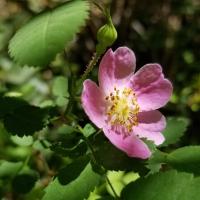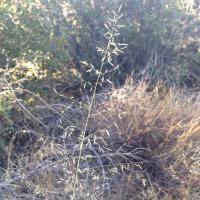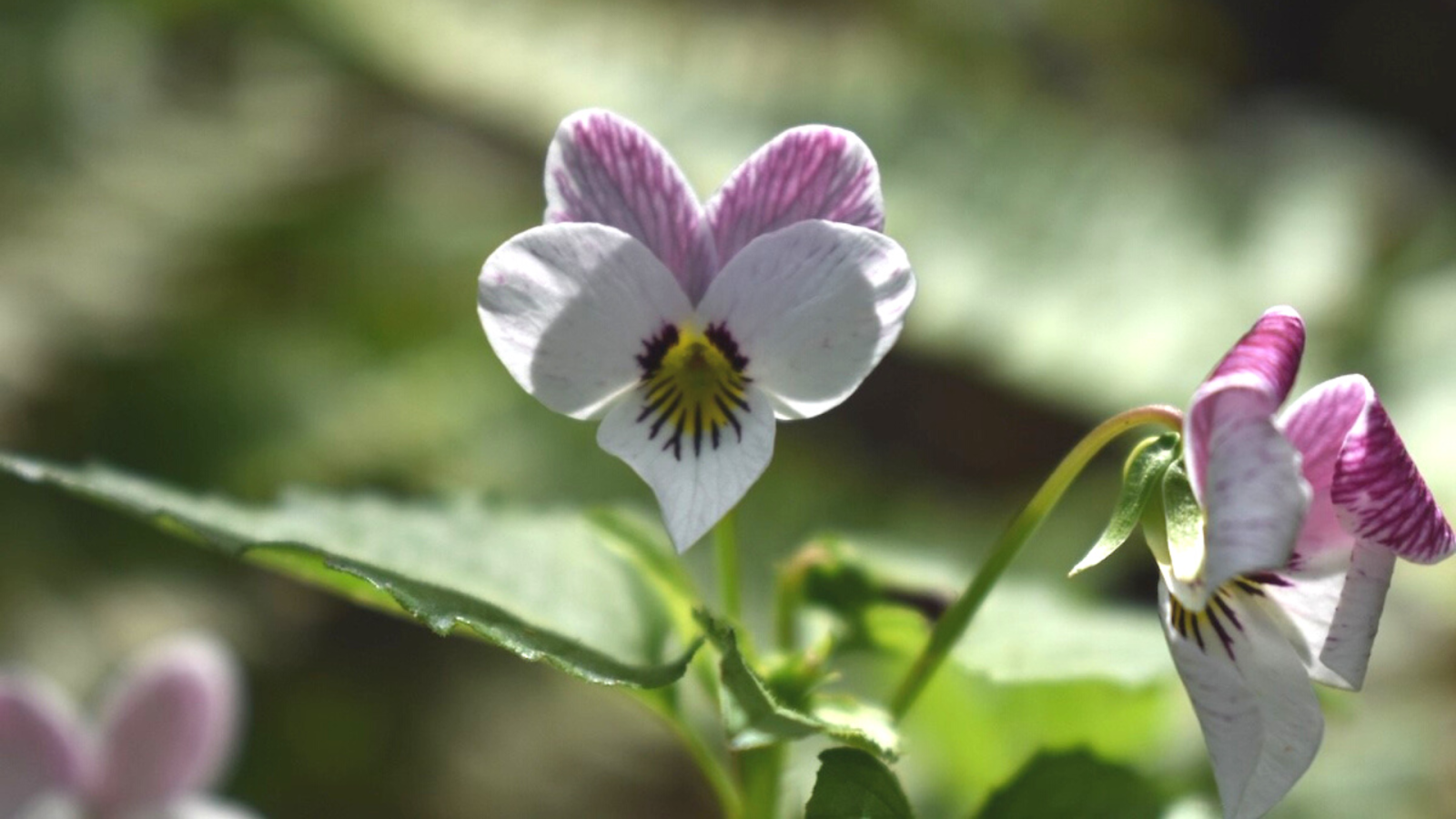Remember, the best way to go hunting for wildflowers is with your camera. If you are able to find any of these Valentine’s-themed plants, please take only pictures and leave only footprints.

Western heart’s ease
Western heart’s ease (Viola ocellata), also featured in the newsletter header, is a species of native violet that can be found throughout the Bay Area. In Victorian England, violets were a symbol of everlasting love. These adorable plants sport flowers with five white and purple petals, as well as heart-shaped leaves. You can find this flower growing throughout California in the coastal foothills and mountain ranges. Fun fact, western heart’s ease is tolerant of high levels of heavy metals, and can be found growing in harsh serpentine soils. It has even been found growing at the edges of mercury mines! These flowers bloom in late spring. Keep an eye out for western heart’s ease in Monte Bello Open Space Preserve, Skyline Ridge Open Space Preserve and Sierra Azul Open Space Preserve.

Native rose
Bouquets of roses are a Valentine’s Day staple, but did you know that the Bay Area is home to multiple species of wild roses? The California wild rose (Rosa californica) and the dwarf rose (Rosa gymnocarpa) can both be found throughout Midpen preserves and the greater Bay Area. Both species grow pink, five-petaled flowers that can range in color from deep magenta to nearly white. Like our familiar garden roses, these two native roses sport prickly spines along their stems. You can find these attractive blooms in the understory of woodlands and at the edges of grasslands from late spring through late summer. Look for wild roses near Thornewood Open Space Preserve, Pulgas Ridge Open Space Preserve and Picchetti Ranch Open Space Preserve.

Suncup
The sunny yellow suncups (Taraxia ovata) may not be classic Valentine’s flowers, but they are early bloomers that begin showing their bright yellow flowers right around Valentine’s Day! They are also members of the evening primrose family, so think of them as a timely native alternative to classic roses. You can identify suncups by their bright yellow flowers with four spoon-shaped petals, and by their circular rosette of feather-shaped or oval-shaped leaves. Suncups thrive in coastal prairie and grassland environments, so keep an eye out for them at La Honda Creek Open Space Preserve and Russian Ridge Open Space Preserve.

Pacific bleeding heart
The Pacific, or western, bleeding heart (Dicentra formosa) is a flowering plant in the poppy family. Its attractive heart-shaped flowers come in all Valentine’s day shades: pink, red, purple and white. You can find bleeding hearts growing in moist soils on redwood forest floors, or in other moist, shady places. Keep an eye out for Pacific bleeding hearts during mid-summer in El Corte de Madera Creek Open Space Preserve, Los Trancos Open Space Preserve and La Honda Creek Open Space Preserve.

Tufted lovegrass
Lovegrasses (genus Eragrostis) are a widespread genus of grasses that can be found on every continent except Antarctica! The scientific name for the genus comes, rather literally, from the Greek eros, meaning love, and agrostis, meaning grass. We are lucky enough to have three species of lovegrass that can be found in and near Midpen preserves. The most common is tufted lovegrass (Eragrostis pectinacean var. pectinacea), which can be found in San Mateo, Santa Clara and Santa Cruz counties! Look out for lovegrasses near Thornewood Open Space Preserve and Windy Hill Open Space Preserve.

